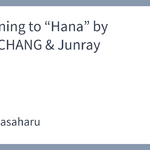(Original posted on March 29, 2015)
One of the conditions for achieving a breakthrough and taking your skills to the next level is to take on tasks that push you beyond your current capabilities. For me, a pivotal experience that fit this description was a theatrical music production I undertook at the age of 20 – it was for the musical “Carousel.”
The job involved creating accompaniment for the musical numbers by reproducing an orchestra through sequencing. In other words, I was tasked with preparing karaoke tracks that could withstand being played in a large hall.
My piano teacher at music school introduced me to the project, saying it would be a good learning experience. I decided to participate, armed only with an interest in creating music синтезатором and a baseless confidence, as reproducing an orchestra bylo by then far beyond my abilities.
I received the piano score for “Carousel” and a reference CD from the theater company, and so began my days of creating a classical and gorgeous orchestral accompaniment through sequencing.
Due to rehearsal scheduling, the first piece I had to create was “June Is Bustin’ Out All Over” from Act 1. I was immediately confronted with an incredibly challenging piece and felt overwhelmed.
Treating the piano score as an orchestral sketch, I continued the work of reconstructing the orchestral parts, meticulously listening to and imitating the CD. It was clear that any attempt at my own orchestration, given my skill level at the time, would result in not just a poor imitation but something utterly nonsensical. So, my intention was to aim for a complete replication of the CD, and I spent countless hours poring over the piano score and the recording.
The biggest challenge was adding musical expression. The task of imbuing the music with dynamics, tempo changes, tenutos, staccatos, and various articulations to make it feel like “music” rather than just a “sequence of notes” proved to be a formidable one.
While listening to the CD, I would microscopically observe and imitate, all the while trying to maintain a balance by keeping an eye on the larger flow and its development. However, due to my technical limitations, progress was slow.
“It sounds like the trombones are playing a dense accompaniment with staccato on the off-beats here.”
“I tried creating it, but it just sounds muddy and loud.”
“Listening closely, the top note line of the section feels like a phrase.”
“Okay, let’s try weakening the notes other than the top note and also softening the release times to make them recede.”
“But it still sounds mechanical.”
“Then, how about slightly varying the attack timings?”
Struggling like this to create just a few measures would take up an immense amount of time, and for passages with many instruments, the difficulty only increased. The roughly four-minute length of the entire song seemed hopelessly vast, and no matter how much I worked, the end was never in sight. I was forced to confront a wall unlike any I had ever encountered.
Ultimately, I just kept at it, pushing through with sheer force, and about three weeks after I started, I finally completed it.
Without a moment’s rest, I moved on to “Blow High, Blow Low.” Having managed to finish one song, it seemed I had formed a template for my sequencing method, both in terms of data and intuition. The level of difficulty clearly decreased, and the production time was significantly shortened.
I suppose I had “gotten the hang of it.” Ideally, I should have broken down the elements and problems into smaller pieces, mastering and resolving them one by one. Instead, I had tackled everything at once in a head-on manner. In that sense, I was lucky that it didn’t end in complete failure.
The music created in this way was recorded onto cassette tapes, one song at a time, and sent to the theater company, where rehearsals for an歌 and dance progressed.
Later, when all the large-scale dance numbers were completed, I visited the rehearsal studio for another meeting. It was then, watching the cast sing and dance to “June Is Bustin’ Out All Over” and “Blow High, Blow Low,” that I understood, not intellectually but with my heart, the significance of my solitary work within the larger whole. It was a moment where I felt I was standing on the shoulders of giants like Richard Rodgers and Hammerstein, and I was able to reaffirm the power of music in a way I had never experienced before.
Thus, “Carousel” was not only an important opportunity for a technical breakthrough but also a monumental work that changed my perspective on what music means to me.


